Top companies trust Airbyte to centralize their Data









This includes selecting the data you want to extract - streams and columns -, the sync frequency, where in the destination you want that data to be loaded.




This includes selecting the data you want to extract - streams and columns -, the sync frequency, where in the destination you want that data to be loaded.

Set up a source connector to extract data from in Airbyte
Choose from one of 300+ sources where you want to import data from. This can be any API tool, cloud data warehouse, database, data lake, files, among other source types. You can even build your own source connector in minutes with our no-code connector builder.


Configure the connection in Airbyte
Ship more quickly with the only solution that fits ALL your needs.
As your tools and edge cases grow, you deserve an extensible and open ELT solution that eliminates the time you spend on building and maintaining data pipelines
Leverage the largest catalog of connectors
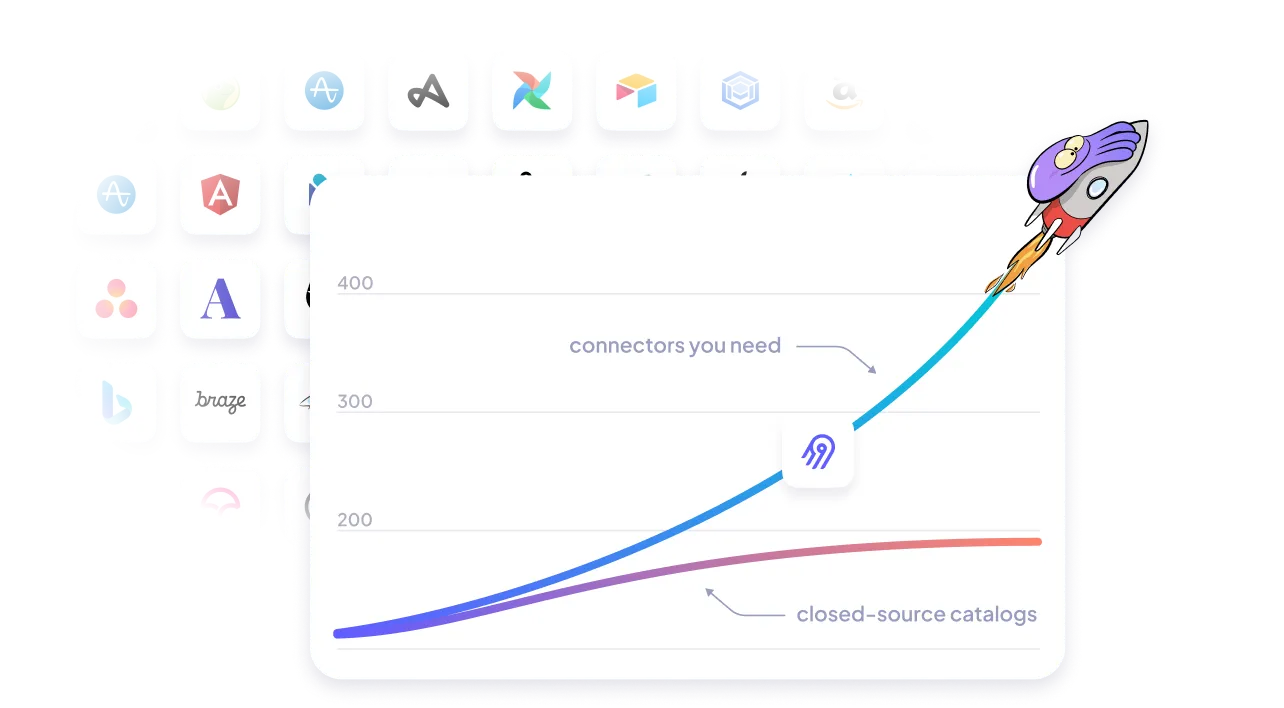
Cover your custom needs with our extensibility
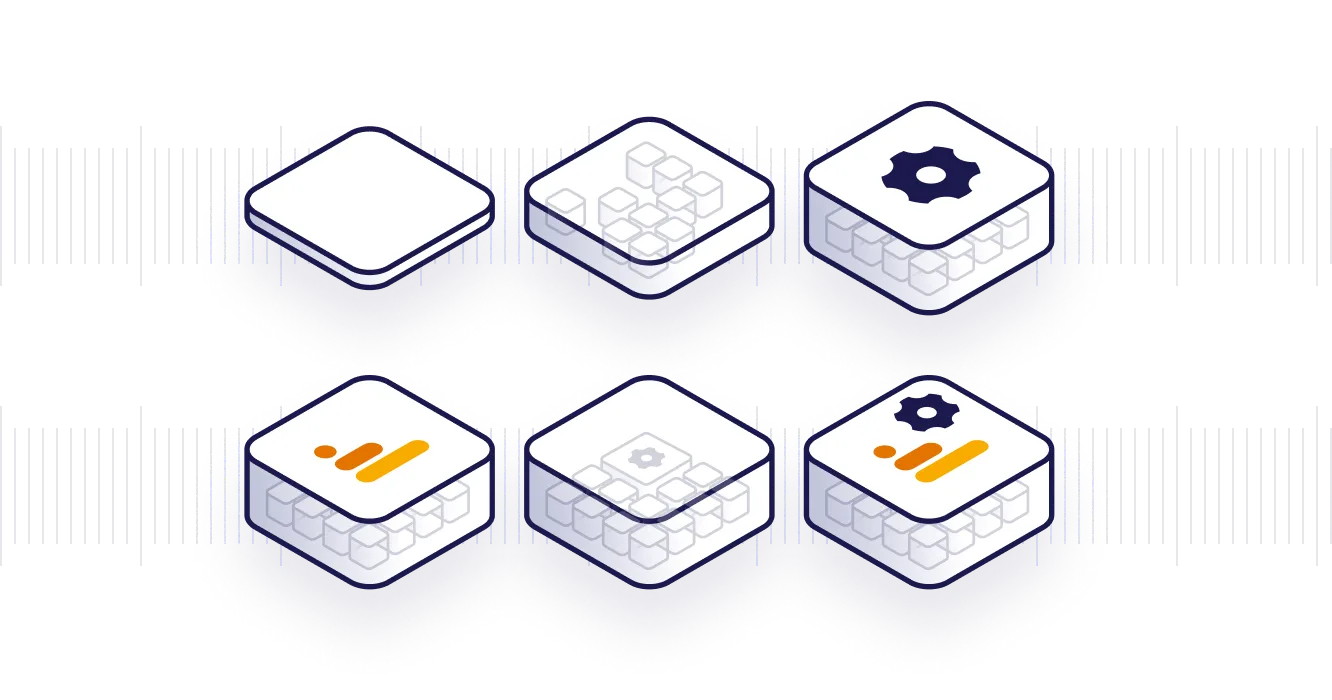
Free your time from maintaining connectors, with automation
- Automated schema change handling, data normalization and more
- Automated data transformation orchestration with our dbt integration
- Automated workflow with our Airflow, Dagster and Prefect integration
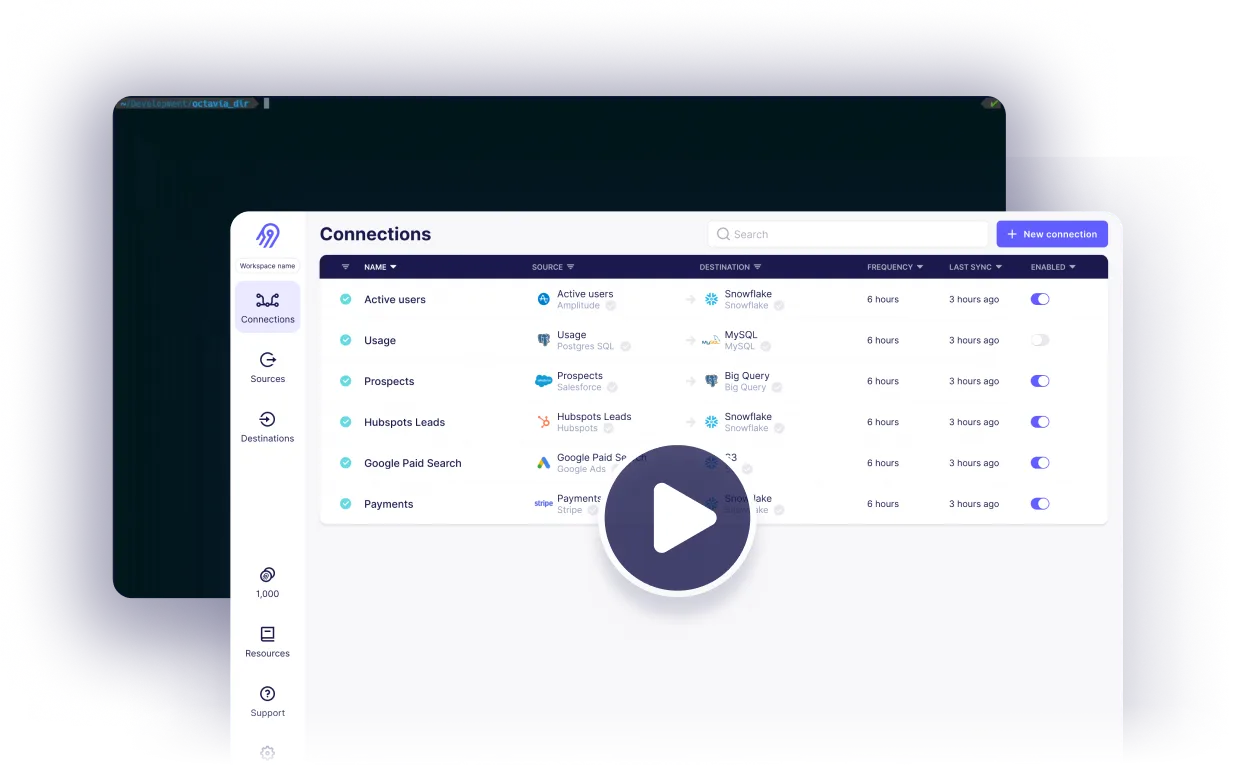
Reliability at every level



Ship more quickly with the only solution that fits ALL your needs.
As your tools and edge cases grow, you deserve an extensible and open ELT solution that eliminates the time you spend on building and maintaining data pipelines
Leverage the largest catalog of connectors

Cover your custom needs with our extensibility

Free your time from maintaining connectors, with automation
- Automated schema change handling, data normalization and more
- Automated data transformation orchestration with our dbt integration
- Automated workflow with our Airflow, Dagster and Prefect integration

Reliability at every level



Ship more quickly with the only solution that fits ALL your needs.
As your tools and edge cases grow, you deserve an extensible and open ELT solution that eliminates the time you spend on building and maintaining data pipelines
Leverage the largest catalog of connectors

Cover your custom needs with our extensibility

Free your time from maintaining connectors, with automation
- Automated schema change handling, data normalization and more
- Automated data transformation orchestration with our dbt integration
- Automated workflow with our Airflow, Dagster and Prefect integration

Reliability at every level



Move large volumes, fast.
Change Data Capture.
Security from source to destination.

We support the CDC methods your company needs
Log-based CDC



Timestamp-based CDC


Airbyte Open Source


Airbyte Cloud


Airbyte Enterprise

Why choose Airbyte as the backbone of your data infrastructure?
Keep your data engineering costs in check
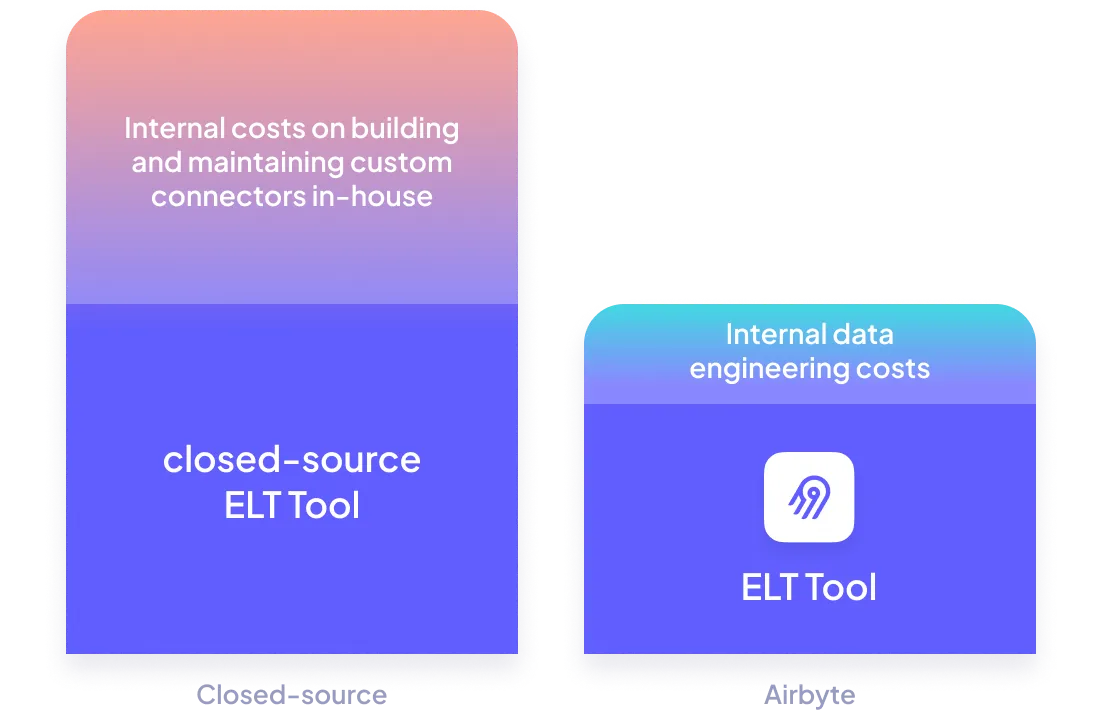
Get Airbyte hosted where you need it to be
- Airbyte Cloud: Have it hosted by us, with all the security you need (SOC2, ISO, GDPR, HIPAA Conduit).
- Airbyte Enterprise: Have it hosted within your own infrastructure, so your data and secrets never leave it.

White-glove enterprise-level support
Including for your Airbyte Open Source instance with our premium support.
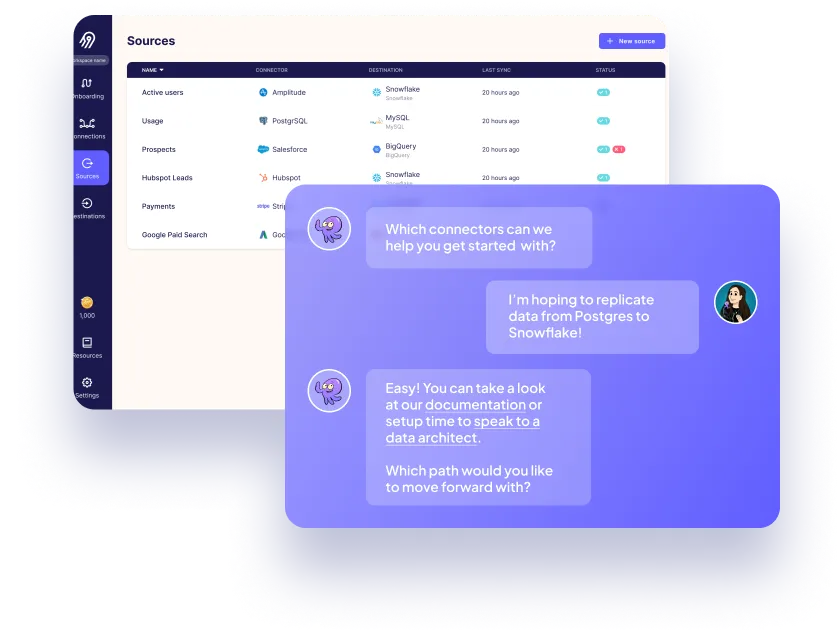
Airbyte supports a growing list of destinations, including cloud data warehouses, lakes, and databases.
Airbyte supports a growing list of destinations, including cloud data warehouses, lakes, and databases.
Airbyte supports a growing list of sources, including API tools, cloud data warehouses, lakes, databases, and files, or even custom sources you can build.



Fnatic, based out of London, is the world's leading esports organization, with a winning legacy of 16 years and counting in over 28 different titles, generating over 13m USD in prize money. Fnatic has an engaged follower base of 14m across their social media platforms and hundreds of millions of people watch their teams compete in League of Legends, CS:GO, Dota 2, Rainbow Six Siege, and many more titles every year.
Ready to get started?
FAQs
What is ETL?
ETL, an acronym for Extract, Transform, Load, is a vital data integration process. It involves extracting data from diverse sources, transforming it into a usable format, and loading it into a database, data warehouse or data lake. This process enables meaningful data analysis, enhancing business intelligence.
The U.S. Census Bureau takes the pulse of the country’s economy. Producing economic data monthly, quarterly, yearly, and at five-year intervals requires high-tech solutions. The U.S. Census Bureau, in response to this need, has built an its first ever iPhone application, aimed at providing users with important economic statistics quickly and easily directly from an iPhone: the America’s Economy application.
The US Census Bureau's API provides access to a wide range of data related to the United States population and economy. The following are the categories of data that can be accessed through the API:
1. Demographic data: This includes information on population size, age, gender, race, ethnicity, and household characteristics.
2. Economic data: This includes data on employment, income, poverty, and industry.
3. Housing data: This includes data on housing units, occupancy, and characteristics of housing units.
4. Education data: This includes data on educational attainment, enrollment, and school districts.
5. Geographic data: This includes data on boundaries, locations, and maps.
6. Health data: This includes data on health insurance coverage, disability, and healthcare facilities.
7. Transportation data: This includes data on commuting patterns, modes of transportation, and traffic.
8. Business data: This includes data on businesses, employment, and revenue.
9. Agriculture data: This includes data on crops, livestock, and farms.
10. International data: This includes data on international trade, migration, and foreign-born population.
What is ELT?
ELT, standing for Extract, Load, Transform, is a modern take on the traditional ETL data integration process. In ELT, data is first extracted from various sources, loaded directly into a data warehouse, and then transformed. This approach enhances data processing speed, analytical flexibility and autonomy.
Difference between ETL and ELT?
ETL and ELT are critical data integration strategies with key differences. ETL (Extract, Transform, Load) transforms data before loading, ideal for structured data. In contrast, ELT (Extract, Load, Transform) loads data before transformation, perfect for processing large, diverse data sets in modern data warehouses. ELT is becoming the new standard as it offers a lot more flexibility and autonomy to data analysts.
What is ETL?
ETL, an acronym for Extract, Transform, Load, is a vital data integration process. It involves extracting data from diverse sources, transforming it into a usable format, and loading it into a database, data warehouse or data lake. This process enables meaningful data analysis, enhancing business intelligence.
The U.S. Census Bureau takes the pulse of the country’s economy. Producing economic data monthly, quarterly, yearly, and at five-year intervals requires high-tech solutions. The U.S. Census Bureau, in response to this need, has built an its first ever iPhone application, aimed at providing users with important economic statistics quickly and easily directly from an iPhone: the America’s Economy application.
The US Census Bureau's API provides access to a wide range of data related to the United States population and economy. The following are the categories of data that can be accessed through the API:
1. Demographic data: This includes information on population size, age, gender, race, ethnicity, and household characteristics.
2. Economic data: This includes data on employment, income, poverty, and industry.
3. Housing data: This includes data on housing units, occupancy, and characteristics of housing units.
4. Education data: This includes data on educational attainment, enrollment, and school districts.
5. Geographic data: This includes data on boundaries, locations, and maps.
6. Health data: This includes data on health insurance coverage, disability, and healthcare facilities.
7. Transportation data: This includes data on commuting patterns, modes of transportation, and traffic.
8. Business data: This includes data on businesses, employment, and revenue.
9. Agriculture data: This includes data on crops, livestock, and farms.
10. International data: This includes data on international trade, migration, and foreign-born population.
What is ELT?
ELT, standing for Extract, Load, Transform, is a modern take on the traditional ETL data integration process. In ELT, data is first extracted from various sources, loaded directly into a data warehouse, and then transformed. This approach enhances data processing speed, analytical flexibility and autonomy.
Difference between ETL and ELT?
ETL and ELT are critical data integration strategies with key differences. ETL (Extract, Transform, Load) transforms data before loading, ideal for structured data. In contrast, ELT (Extract, Load, Transform) loads data before transformation, perfect for processing large, diverse data sets in modern data warehouses. ELT is becoming the new standard as it offers a lot more flexibility and autonomy to data analysts.
What is ETL?
ETL, an acronym for Extract, Transform, Load, is a vital data integration process. It involves extracting data from diverse sources, transforming it into a usable format, and loading it into a database, data warehouse or data lake. This process enables meaningful data analysis, enhancing business intelligence.
The U.S. Census Bureau takes the pulse of the country’s economy. Producing economic data monthly, quarterly, yearly, and at five-year intervals requires high-tech solutions. The U.S. Census Bureau, in response to this need, has built an its first ever iPhone application, aimed at providing users with important economic statistics quickly and easily directly from an iPhone: the America’s Economy application.
The US Census Bureau's API provides access to a wide range of data related to the United States population and economy. The following are the categories of data that can be accessed through the API:
1. Demographic data: This includes information on population size, age, gender, race, ethnicity, and household characteristics.
2. Economic data: This includes data on employment, income, poverty, and industry.
3. Housing data: This includes data on housing units, occupancy, and characteristics of housing units.
4. Education data: This includes data on educational attainment, enrollment, and school districts.
5. Geographic data: This includes data on boundaries, locations, and maps.
6. Health data: This includes data on health insurance coverage, disability, and healthcare facilities.
7. Transportation data: This includes data on commuting patterns, modes of transportation, and traffic.
8. Business data: This includes data on businesses, employment, and revenue.
9. Agriculture data: This includes data on crops, livestock, and farms.
10. International data: This includes data on international trade, migration, and foreign-born population.
1. Open the Airbyte platform and navigate to the "Sources" tab on the left-hand side of the screen.
2. Scroll down until you find the "US Census" source connector and click on it.
3. Click on the "Create Connection" button to begin setting up your connection to the US Census data source.
4. In the "Connection Configuration" page, enter a name for your connection and provide your API key in the "API Key" field.
5. Click on the "Test Connection" button to ensure that your credentials are correct and that the connection is working properly.
6. Once the connection has been successfully tested, click on the "Create" button to save your connection settings.
7. You can now use this connection to extract data from the US Census data source by creating a new pipeline and selecting the US Census source connector as your source.
8. Follow the prompts to configure your pipeline and select the data you want to extract from the US Census data source.
9. Once your pipeline is configured, you can run it to extract data from the US Census data source and load it into your destination data warehouse or data lake.
What is ELT?
ELT, standing for Extract, Load, Transform, is a modern take on the traditional ETL data integration process. In ELT, data is first extracted from various sources, loaded directly into a data warehouse, and then transformed. This approach enhances data processing speed, analytical flexibility and autonomy.
Difference between ETL and ELT?
ETL and ELT are critical data integration strategies with key differences. ETL (Extract, Transform, Load) transforms data before loading, ideal for structured data. In contrast, ELT (Extract, Load, Transform) loads data before transformation, perfect for processing large, diverse data sets in modern data warehouses. ELT is becoming the new standard as it offers a lot more flexibility and autonomy to data analysts.





































